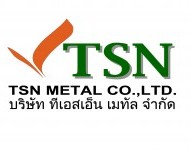ทองเหลืองคือ
ผลของธาตุต่างๆ ที่อยู่ในทองเหลือง
นิกเกิล จะช่วยเพิ่มความแข็งแรงและความทนทานต่อการกัดกร่อนให้กับทองเหลือง จึงทำให้ทองเหลืองมีคุณสมบัติที่แข็งแกร่งยิ่งขึ้น และนำมาใช้ในงานที่ต้องการคุณสมบัติต้านการกัดกร่อนได้ดี อีกทั้งเมื่อผสมนิกเกิลให้เท่ากับปริมาณของสังกะสี ก็จะทำให้ทองเหลืองเปลี่ยนเป็นสีขาวเหมือนเงิน จึงถูกเรียกอีกชื่อหนึ่งว่า นิกเกิลเงิน
เหล็กและแมงกานีส มีคุณสมบัติช่วยเพิ่มความแข็งแรงให้กับทองเหลือง ซึ่งส่วนใหญ่แล้วก็จะนิยมผสมเข้าไปในทองเหลืองประเภท ทองเหลืองต้านแรงดึงสูง
ตะกั่ว ไม่มีส่วนผสมที่ตั้งใจใส่เข้าไปในทองเหลืองโดยตรง แต่อาจติดมาจากสังกะสีโดยไม่รู้นั่นเอง ซึ่งตะกั่วนั้นก็จะมีคุณสมบัติในการช่วยให้การไหลตัวของน้ำโลหะดีขึ้น ทั้งมีความต้านทานแรงดึง มีความเหนียวเหมาะกับการขึ้นรูป
อลูมิเนียม จะช่วยเพิ่มความสามารถในการต้านทานต่อการกัดกร่อนให้กับทองเหลือง และช่วยลดการสูญเสียโลหะสังกะสีในการหลอมได้เป็นอย่างดี
ดีบุก ช่วยเพิ่มความต้านทานต่อการกัดกร่อน และสามารถต้านทางแรงดึงได้มากขึ้น
คุณสมบัติเชิงกลของทองเหลือง
ทองเหลือง ก็คือ โลหะที่มีการผสมระหว่างทองแดงและสังกะสีเข้าด้วยกัน ทั้งนี้ก็เพราะสังกะสีสามารถละลายในทองแดงได้ ซึ่งปริมาณของสังกะสีที่ใส่ลงไปในทองแดงนั้นจะมากหรือน้อยก็ขึ้นอยู่กับความต้องการของผู้ผลิตเอง โดยจะทำให้ทองเหลืองที่ได้ มักมีคุณสมบัติที่แตกต่างกันไป ไม่สามารถกำหนดคุณสมบัติอย่างตายตัวได้ แต่สำหรับคุณสมบัติที่ดีนั้น จะต้องมีคุณสมบัติหลักๆ ดังนี้ คือ สามารถทนต่อการกัดกร่อนและสภาพอากาศได้ดี ทั้งมีความแข็งแรงทนทานและทนต่อรอยขีดข่วนได้อย่างดีเยี่ยม
ทองเหลือง (Brass) เป็นโลหะที่เกิดจากการผสมระหว่างทองแดงและสังกะสี แต่จะมีคุณสมบัติเฉพาะตัวที่แตกต่างกันไป เนื่องจากปริมาณของสังกะสีที่ผสมแล้วได้แปรเปลี่ยนไปอยู่ที่ประมาณ 5-45% โดยการค้นพบทองเหลืองนั้น คาดว่าน่าจะเป็นยุคสมัยก่อนประวัติศาสตร์ เพราะมีการนำทองเหลืองมาใช้ประโยชน์ในยุคสำริด และยังถูกเรียกว่าเป็นโลหะที่แข็งแกร่งที่สุดในยุคสำริดอีกด้วย
ทองเหลือง เป็นโลหะที่มีสีเหลืองและมีบางส่วนที่คล้ายกับทองคำเป็นอย่างมาก แถมยังมีคุณสมบัติในการต่อต้านการเกิดสนิมได้เป็นอย่างดี จึงมักจะมีการนำทองเหลืองมาทำเป็นเครื่องประดับเพื่อตกแต่งในบ้านเรือนและเครื่องมือเครื่องใช้ต่างๆ
BRASS
Red brass is the most durable of all metals for the plumbing industry and commercial water pipe applications. It is excellent for resistance to dezincification and season cracking which most high copper brasses are known for. Dezincification Resistant Alloys (also known as DZR or DR Alloys) such as Red Brass C352 has a small amount of arsenic added to the alloy in order to prevent chlorinated water from leaching the zinc from your plumbing products which eventually leads to the weaking and cracking of your plumbing products.
Red brass is also specified for underground service lines since it offers great corrosion resistance to all types of potable waters, and has moderate strength and good retention of spring properties.
Red Brass Applications
- Fromed into fittings & nipples for carrying water in commercial plumbing and OEM applications.
- Low cost bearing materials.
YELLOW BRASS
Yellow brass in C26000 (Cartridge Brass), C27000, C27200 and C27400. These brasses have relatively good corrosion resistance, moderately high strength, and in some forms it has very good ductility. They are available in many forms including rod, bar, sheet, plate and more. We provide material cut to your specifications on our state of the art equipment eliminating unnecessary machining.
LEADS BRASS
Lead brass have high machinability and atmospheric corrosion resistance. The machinability of brass is increased by the addition of lead. The leaded brass alloys have excellent machinability, good strength and corrosion resistance. Lead can be added to any brass to increase machinability and provide pressure tightness by sealing the shrinkage pores. There are low, medium and high leaded brasses, with lead contents up to 3.5%. The lead brasses are used for architectural hardware, general purpose screw machine parts, screws, valves, fittings, bearings and specialty fasteners.
NAVAL BRASS
Naval Brass is the classic marine, high strength and corrosion resistant alloy containing nominally 60% copper, .75% tin and 39.2% zinc. It is widely used in marine construction where a strong, corrosive resistant and hard material is required. It is suitable for both salt and fresh water applications. Naval brass is used in marine applications such as propeller shafts, marine hardware, decorative fittings, shafting, propeller shafts and turn buckles. There are also many industrial applications such as welding rod, condenser plates, structural uses, valve stems, balls, heat exchanger tube, aircraft turn buckle barrels, dies, golf ball production and many more.
FREE MACHINING BRASS
C36000 is the most versatile and commonly used copper ally bar stock used in both the North and South American Markets, second only to copper itself! It is used excessively to make an indescribable amount and variety of screw machine products. It's 100% machinability stems from a favorable interaction between the material's basic structure and a few percents of lead. The result is an alloy with good engineering properties and the ability to be machined at an extremely low cost.











